500 Hood Road, Suite 320Markham ONL3R 9Z3
Canadian commercial buildings need resilient and dependable commercial roofing systems to withstand the weather extremes and other forces they face. Certain commercial roofs tend to be better suited to meet these heavy demands.
The numbers of different types of commercial roofing in use can vary and change over time, depending on specific building needs, industry trends, technological advancements, regional preferences, and other factors.
Choosing the best commercial roof system involves considering various factors. Climate plays a pivotal role; regions with heavy snowfall, high temperatures, high winds, or other extreme weather will have additional needs to address.
Budget constraints may impact material choices and maintenance expenses. Sustainability goals may lead to green roof options.
Consulting with roofing professionals, evaluating life cycle costs, and considering long-term durability and maintenance costs are essential steps in determining the optimal commercial roof system for your specific circumstances.
Local building codes and regulations may specify materials, insulation requirements, and even address considerations like wind and snow loads based on the region's climate, to address safety, structural integrity, and environmental considerations.
The building's use and occupancy influence roofing choices, too. Structures housing heavy machinery may demand robust options like Built-Up Roofing or metal roofs, while low-traffic roofs benefit from single-ply membrane systems. Specific occupancies, such as data centers, necessitate specialized roofing for precise temperature control, while offices may prioritize energy-efficient solutions for cost-effectiveness.
Built-Up Roofing (BUR) is the most widely used and popular choice for commercial buildings due to its durability, weather resistance, and other attributes.
A BUR roofing system is characterized by its multiple layers, providing durability and weather resistance, typically consisting of multiple layers.
The core of a BUR system is built with layers of bitumen, a sticky and viscous substance derived from crude oil. This bituminous mixture forms a waterproof barrier that shields the building from the elements. Between the layers of bitumen, a reinforcing material such as fibreglass or polyester adds strength and stability to the roofing structure, enhancing its ability to withstand the harsh Canadian climate. The top layer, or surfacing material, is usually gravel or aggregate, acting as a protective and insulating shield.
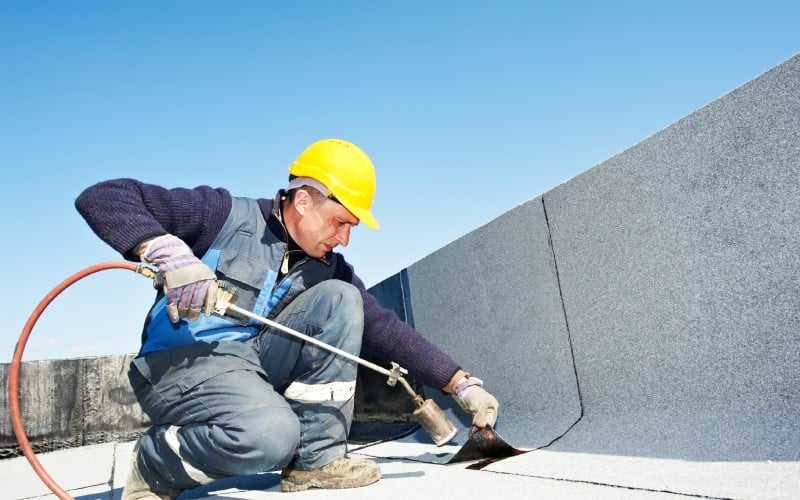
Several factors contribute to the widespread use of Built-Up Roofing.
BUR systems are known for their longevity, potentially lasting as long as 25 to 30 years. The multiple layers and robust materials make them highly resistant to damage from snow, rain, and hail. BUR systems are also relatively easy to maintain, and repairs can be made by adding additional layers of bitumen and reinforcing materials. The aggregate or gravel surfacing on BUR roofs helps regulate temperature by reflecting sunlight and reducing heat absorption, offering good energy efficiency. Similarly, with the conventional modified bitumen roofs.
The longevity, ease of maintenance, and energy efficiency make BUR systems relatively cost-efficient, providing cost savings for businesses.
While Built-Up Roofing is the most common choice, other roofing systems are also common.
TPO (thermoplastic olefin), EPDM (ethylene propylene diene terpolymer) and PVC are popular single-ply membrane options. These lightweight and flexible materials offer excellent resistance to UV rays, are puncture-resistant, and can be cost-effective. These are popular for retail building applications, schools and recreational facilities.
Metal roofing systems, typically made of steel or aluminum, are valued for their durability, longevity, and resistance to fire. They are chosen when there are higher risks of fires. Metal roofing is also popular for industrial structures and warehouses which have large roof spans and require a robust, low-maintenance roofing solution capable of withstanding environmental stresses.
Increasingly popular in urban environments, green roofs consist of a layer of vegetation over a waterproofing membrane. These roofs provide insulation, absorb rainwater, and contribute to environmental sustainability. Green roofs help businesses and municipalities enhance energy efficiency, reduce urban heat island effects, and promote environmental sustainability.
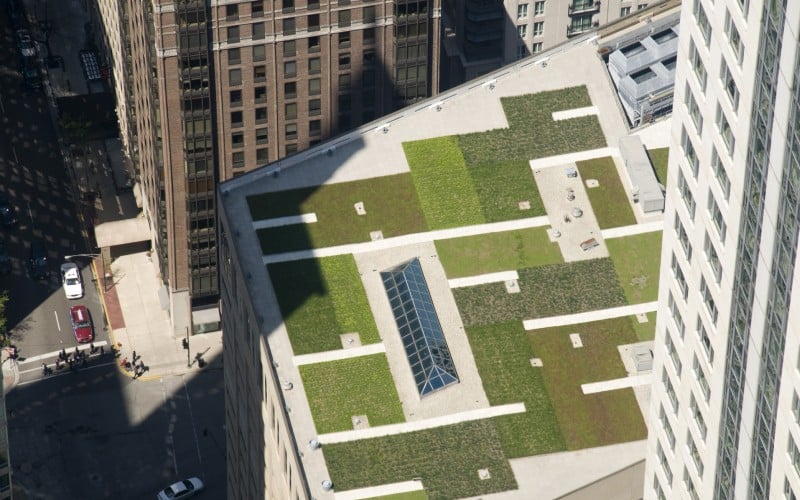
When choosing a Built-Up Roofing (BUR) system, certain considerations need to be addressed to ensure optimal performance.
Ensure proper installation by employing experienced contractors with expertise in BUR roofing, and consult with a roofing engineer on design. Consulting with an engineering firm during the planning phase helps tailor your Built-Up Roofing system to your building's specific needs, ensuring it can withstand local weather conditions.
Regular maintenance is key, to address issues like ponding water, which can compromise the roof's integrity. Professional inspections, ideally conducted annually, can detect potential problems early, prevent costly repairs, and can direct maintenance activities for maximum benefits. Be sure to also factor in insulation needs for energy efficiency.
ABSI offers a range of engineering building envelope services, including commercial roofing services such as roof safety audits and annual inspections, roof system designs, roof asset management, and roof inventory planning programs. We can help you choose the right roofing type for your needs, assist in the design, and provide expert audit and inspection services, helping you get the most out of your roofing system.
A commercial roofing condition assessment is a comprehensive evaluation of a commercial building's roofing system, focusing on its long-term performance, maintenance, and potential for improvement. Unlike a standard inspection, it goes beyond identifying immediate issues, delving into the overall condition and lifespan of the roof. It includes a detailed analysis of materials, structural integrity, drainage, and insulation, aiming to provide a strategic plan for roof management.
This assessment helps building owners and facility managers make informed decisions about repairs, maintenance, and potential upgrades, ultimately ensuring the roof's durability, energy efficiency, and cost-effectiveness over an extended period.
A comprehensive roof condition assessment aims to meet several important objectives. It aims to assess whether the roof system is effectively fulfilling its designated purpose of protecting the commercial building from the elements and maintaining structural integrity. Secondly, it pinpoints any indications of weakness, vulnerability, deterioration, or potential hazards within the roof system. This includes identifying issues such as leaks, damaged or degraded materials, excessive loading, and areas at risk of structural compromise.
A thorough condition assessment goes beyond identifying problems; it also classifies the required repairs and maintenance tasks and prioritizes needed work to provide a roadmap for roof management. A full assessment aims to ensure the long-term health and optimal performance of the roof, extending the lifespan and reducing the potential for costly repairs or premature replacement.
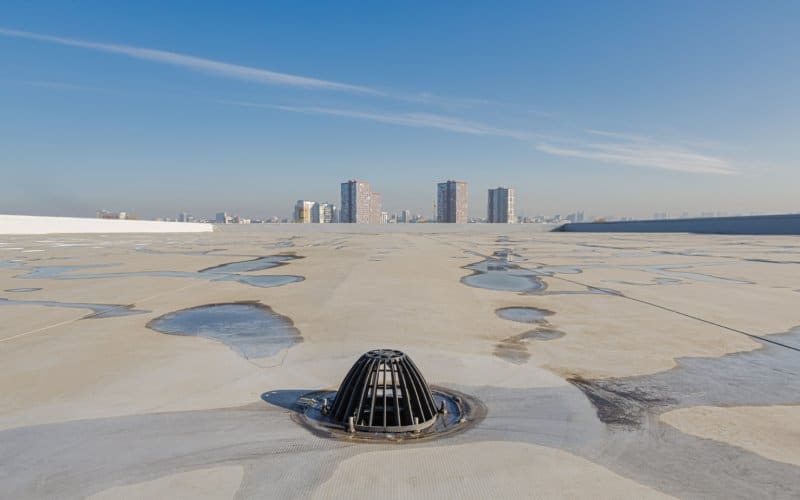
A commercial roof condition assessment completes a thorough evaluation of various crucial aspects of the roofing system. It goes beyond an inspection and encompasses a comprehensive analysis to help property managers and owners make informed, strategic decisions about the building's roofing systems.
An assessment starts with a full inventory of the existing roof systems. This documents the types of materials used, existing insulation, drainage components, and any added features such as rooftop equipment or green roofing elements.
Next, a detailed examination of the roofing materials and systems are completed to determine their current states. The condition of the membrane, flashings, seams, and other critical components are assessed and any signs of damage, wear, or aging are identified.
All deficiencies are identified and documented with details. This includes issues such as leaks, damaged or deteriorating materials, inadequate insulation, and problems with drainage systems. The structural integrity of the roof is examined and evaluated, including the underlying support structure and other components.
Not only are action items identified, but they are prioritized to make the property owner’s planning easier. By distinguishing between immediate repair needs, maintenance tasks, and long-term replacement plans, resources are allocated more efficiently.
A key goal is to estimate the remaining service life of the roof. The roofing systems types and conditions are considered in conjunction with expected weather conditions and other factors, plus the quality of previous maintenance and repairs, to create a life expectancy estimate. Based on this service life estimation, a forecast for the anticipated year of roof replacement can be made.
A detailed cost analysis is also provided, with estimates for maintenance and repair work that may extend the roof's life; this can be compared against budget projections for a full roof replacement.
Proper installation, safety, compliance with building codes, fire regulations, and other requirements are considered. An assessment may also consider sustainability aspects, evaluating whether the current roof or proposed replacement aligns with energy efficiency best practices and green building practices.
At the end, a thorough report of findings and analysis is created, providing an essential tool and resource for property owners and managers to plan for the future and make informed decisions.
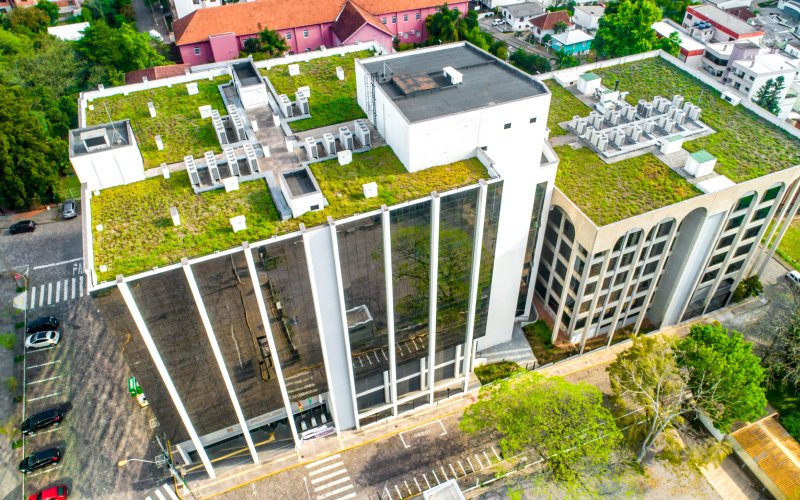
It’s critical to know the difference between an inspection and an assessment to understand which you need. The terms are sometimes used interchangeably, so being aware of the two types of roofing service and how they differ is important.
You need to know which you need at a given time, but you also need to be clear on the difference between them when looking for a company to complete one for you. Otherwise, you may unintentionally get an inspection when you need a full assessment. Generally, a roofing inspector may complete inspections, while an engineering firm is required for an assessment.
While both inspections and assessments involve noting the condition and wear on a roof, an assessment is a much more involved process.
Assessments offer a comprehensive analysis, documenting roof design, materials, and conducting testing. The roof's interior system and interior spaces are assessed, too. They include schematics, photographs, and detailed information about a roof's composition and its relationship to other building components. Thermographic imaging to identify heat loss and potential leak areas is often done. Core sampling to determine the number of roofing components, and other destructive and non-destructive testing may be completed.
Because engineers typically conduct roof condition assessments, accuracy and reliability is improved. This provides valuable expertise in building codes and mathematical load calculations for roofing systems and other important aspects for roofing management. It also enables the development of comprehensive, long-term roofing plans, allowing assessments to act as blueprints for necessary work.
On the other hand, roof inspections are visual examinations that quickly identify visible damage and potential leak sources. Inspections provide immediate insights and can be reported verbally or in writing.
During a commercial roof inspection, a professional roof inspector examines critical areas for signs of damage or structural issues, including the roof deck, roof surfaces, membranes, roof vents, metal flashing, gutters, and drainage pipes. Often, a commercial roof inspection checklist will be followed to guide the inspection. Some commercial roof inspections may look at interiors and take samples.
Issues such as cracks or defects that require attention are noted, but analysis for long-term planning is not included.
Although assessments are beneficial for budgeting and planning at any time, they are especially useful before buying a property and before and after major renovations. They help provide documentation for maintaining warranties or facilitating insurance claims, too.
Comprehensive commercial roof condition assessments offer substantial cost savings and extend the lifespan of roofing systems.
By identifying and addressing minor issues early on, building owners can prevent major roof damage that require costly repairs or premature replacement. This also minimizes building downtime and associated revenue losses.
They can highlight opportunities to increase energy efficiency, reducing heating and cooling costs and operational expenses while lowering the building’s environmental footprint.
They also ensure compliance with regulations and safety standards to protect against liabilities, as well as streamline insurance claims.
A thorough and accurate roof assessment offers significant advantages throughout the lifespan of both your roof and commercial building. A good assessment provides more valuable information for optimal benefits, allowing property owners to leverage the full benefits of an assessment.
ABSI provides high quality, comprehensive roofing consulting services including assessments and inspections. Commercial buildings and their roofs are major assets; protect your investment and prevent roof problems with superior assessments that give you clear, actionable information.
A commercial flat roof assembly is essential for protecting the building underneath it against the elements and ensuring the safety and comfort of the occupants. Multiple roofing systems need to work seamlessly together for the roof to do its job effectively and efficiently. Regular inspections are needed to help building owners and property managers maintain the integrity and longevity of the roof, and ensure it is in good condition and working as intended. By identifying potential issues early on, these inspections are a valuable tool to prevent costly repairs and extend the lifespan of the roof.
An informal commercial roof inspection, typically conducted by a property manager or other such person twice a year, or after severe weather such as high winds, primarily involves a quick visual scan of the roof's surface and surrounding area to identify obvious damage to the roof. This inspection aims to detect immediate issues for repair and necessary basic maintenance tasks like cleaning debris and gutters to ensure proper drainage. While helpful for prompt identification of visible problems, informal inspections lack the depth and precision offered by professional assessments.
A professional commercial roof inspection should also be performed once or twice a year in addition to any informal inspections. It is a comprehensive evaluation conducted by trained experts with access to specialized equipment. Professionals employ tools such as infrared cameras and moisture meters to uncover hidden problems like moisture infiltration, thermal irregularities, and potential weak points that are not discernible through visual observation alone. This thorough examination provides actionable information for property managers, offering insights into the roof's overall condition and any required maintenance or repairs. It results in a formal report detailing the roof's status, potential issues, and recommended solutions. These detailed reports are invaluable for informed decision-making, budgeting, and long-term maintenance planning, ensuring the roof's longevity and structural integrity while reducing unexpected costs.
The frequency of roof inspections depends on several factors, such as the age of your roof, the type of roofing material used, and the climate in your area. As a general guideline, it is recommended to have your commercial roof inspected at least twice a year, preferably in the spring and fall.
If there are signs of potential damage, an immediate roof inspection is needed; you shouldn't wait for the next scheduled inspection. Visible damage to your roof, or leaks and water damage on the inside of the commercial building mean the roof should be inspected as soon as possible to prevent further damage.
Regular inspections ensure issues are noted as they arise, and enables potential issues to be proactively identified before becoming problems. Conducting them regularly ensures you are receiving the full benefit that they offer.
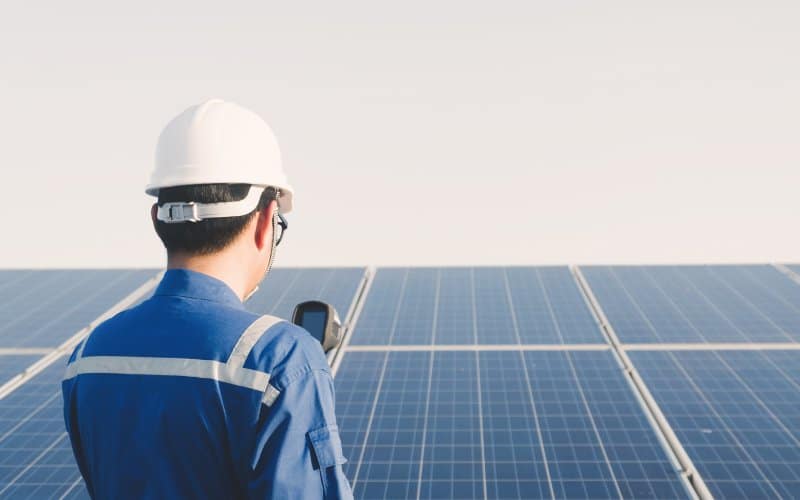
Commercial roofs are exposed to various weather conditions and external elements that can cause damage over time. Regular inspections allow you to identify wear and tear, both visible and hidden, that could lead to leaks or structural problems.
Adequate drainage is essential for a flat roof's health; poor drainage is a common problem, and affects the performance of your commercial roof.
Regular inspections enable you to identify any drainage issues that can lead to water accumulation and ponding, potential water damage, and structural damage. Addressing these issues ensures proper water flow to avoid long-term roof degradation.
A professional roof inspector can assess poor drainage concerns more proactively, and identify potential leaks before they become major problems. They can also recommend appropriate repairs to prevent further damage.
By addressing any minor issues early on, regular commercial roof inspections can help extend the lifespan of your roof. Proper maintenance and timely repairs can prevent minor problems from escalating into major issues that may require costly roof replacements.
A well-maintained roof is an essential component in energy efficiency. Inspections reveal areas of heat loss and insulation concerns, allowing for improvements that lower energy costs and reduce your carbon footprint. Additionally, it can help provide a more consistently comfortable environment for occupants as it more efficiently maintains a warmer or cooler state.
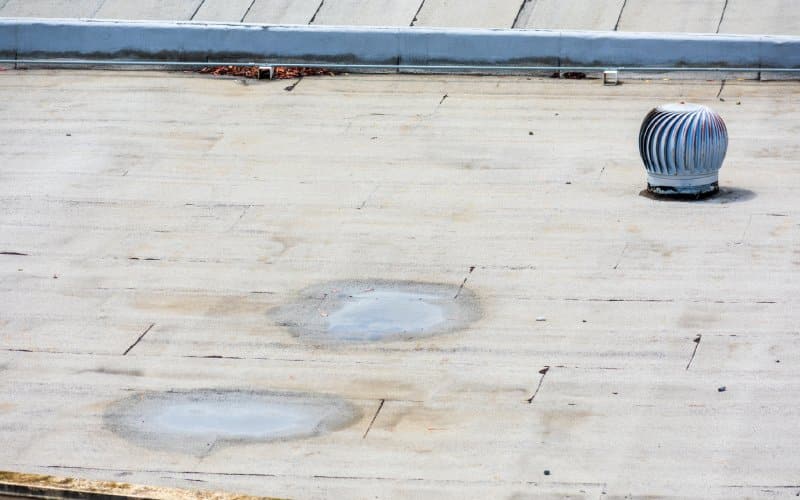
A well-maintained roof is better equipped to withstand various weather conditions, including heavy rain, snow accumulation, strong winds, and extreme temperatures. Regular commercial roof inspections ensure that your roof remains in optimal condition, so it is ready at any time for severe weather and can protect your commercial property and your occupants.
During regular inspections, professional roof inspectors can identify small repairs that are needed to maintain the integrity of your commercial roof. By addressing these issues early on, you can prevent them from becoming major issues that may require extensive repairs.
Regular inspections also help prevent the need for a complete roof replacement prematurely. By investing in regular maintenance and timely repairs, you can avoid the expense of a full roof replacement for longer, so you get more out of your roof investment.
Contracting the services of a professional roof inspector, such as an engineering company, will pay off, as you gain access to a wealth of expertise and experience, valuable information about your roof to save money, and other benefits.
Their experience and knowledge in commercial roof inspections ensures that your roof will be assessed thoroughly, and any issues will be identified and addressed properly.
Professional roof inspectors have the knowledge and expertise to conduct a thorough evaluation of your commercial roof. They provide detailed inspection reports that outline the condition of your roof, including any areas that require immediate attention or future maintenance.
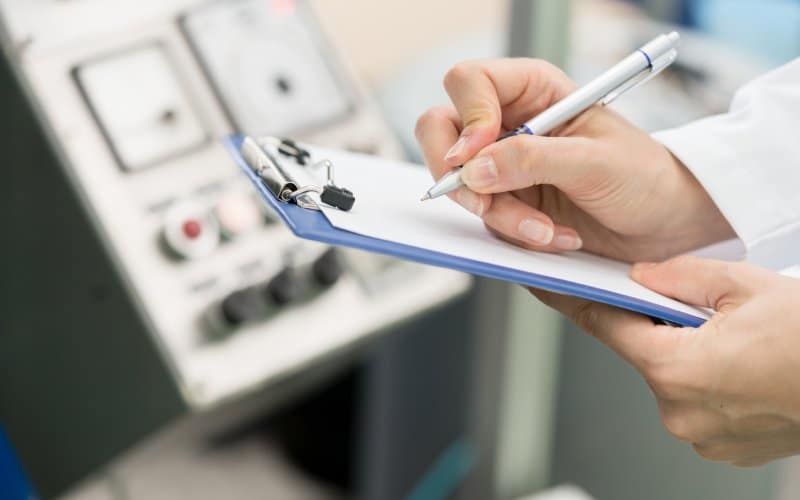
In the event of roof damage, having a professional inspection report can be valuable when dealing with insurance claims. Insurance companies often require documentation of the condition of your roof prior to the incident. A detailed inspection report from a reputable roof inspection company can help expedite the claims process and ensure you receive the necessary compensation for repairs or replacement.
Commercial roofing systems are complex and require specialized knowledge for proper inspection and maintenance. Reputable commercial roofing companies and engineering consulting services have professionals with expertise in commercial roofing systems who can identify potential issues and provide appropriate solutions.
Commercial roof inspections require specific equipment and tools to assess the condition of your roof accurately. Hiring a reputable commercial roofing company gives you access to professional-grade equipment and tools that ensure thorough and comprehensive inspections.
ABSI provides expert roof consulting services. Our expert team will conduct a comprehensive assessment of your roofing system. Any issues, shortcomings, or ongoing leaks will be meticulously documented on a roofing blueprint, with detailed evaluations featured in the annual roof report. We also offer preliminary budget estimates and create a maintenance project plan to promptly address any deficiencies.
Commercial roofs need to protect buildings against the elements and not contribute to any energy inefficiencies. As a commercial building roof reaches the end of its lifespan, it starts to lose its ability to perform its essential functions effectively.
Knowing the expected lifespan of a commercial roof is crucial for budgeting, maintenance planning, and protecting your commercial building investment.
The lifespan of a commercial roof is 20-60 years but it might vary significantly based on several factors, including the type of roofing material used, the quality of installation, the climate in which the building is located, and the frequency and quality of maintenance the roof receives.
Roofing Material: Different materials have varying lifespans. For instance:
Modified Bitumen Roofing offers a lifespan of approximately 20 to 30 years.
EPDM (rubber) roofs typically last about 25-30 years.
Metal roofs are known for their durability, often lasting 30-60 years.
TPO and PVC roofs, which are types of thermoplastic roofs, generally have a lifespan of 20-30 years.
Built-up roofs (BUR) and Modified Bitumen roofs can last 20-30 years.
Proper installation and maintenance are essential to achieve the maximum lifespan of a commercial roof. A well-installed roof provides structural integrity, prevents leaks, withstands harsh weather conditions and other forces. Regular maintenance, including inspections and repairs, addresses wear and tear before it can damage a commercial roof further.
If not both installed and maintained properly, a commercial roof is susceptible to premature degradation, leaks, structural damage, and a shorter life.
The type of roof installed will impact the longevity; this includes roof slope, roofing material,
Typical commercial roofing is a low slope, or flat, roof. Flat roofs, though cost-effective and versatile, pose greater challenges for drainage. They are more susceptible to water ponding, which can accelerate wear and tear, leading to leaks and reduced longevity. Careful installation and regular maintenance are crucial for flat roof designs to ensure water doesn't accumulate and damage commercial roofing systems.
Choosing the right roofing material for your building is essential; below are some common commercial roofing materials and their expected life spans.
Commercial metal roofing offers durability and longevity, so is a popular flat roof material choice. Various roofing materials that take advantage of metal's strength include steel, aluminum, and copper. Each provides unique properties, benefits, and average lifespans. Steel roofs last 30-45 years, aluminum roofs typically endure 40-60 years, while copper roofs can last over a 100years.
Factors contributing to the length of time that metal roofs last include its exceptional ability to withstand extreme weather conditions and its resistance to fire, pests, and rotting. Reflective coatings improve energy efficiency. A metal roof typically requires less maintenance, so is less susceptible to premature failure due to deferred maintenance.
A built-up roofing system uses multiple layers of roofing felt and bitumen, covered with a gravel or mineral cap sheet. This traditional roofing system boasts remarkable durability, making it a popular choice for commercial buildings. These roofs can last anywhere from 20 to 30 years, or potentially longer with excellent ongoing maintenance.
The multiple layers contribute to its durability and resistance to foot traffic and punctures. It can be resurfaced and repaired to help extend its lifespan. It also provides good insulation and UV protection which can help protect underlying waterproofing, membranes, and roofing systems to extend their life spans as well.
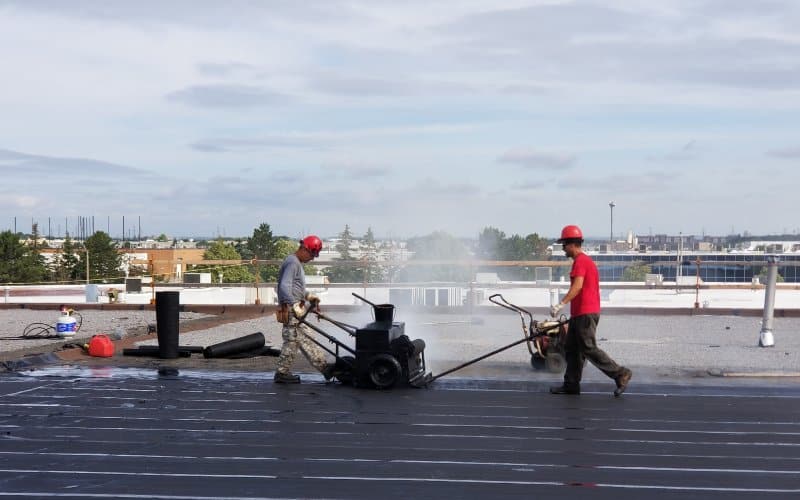
Modified bitumen roofing is an advancement of built-up roofing systems, and features enhanced flexibility and adaptability. This roofing system uses modified asphalt, often reinforced with polyester or fiberglass. Modified bitumen roofs are extremely resistant to weather, thermal shock, and UV exposure and offer a lifespan of approximately 20 to 30 years.
This system can be installed as a multi-ply system for added durability and is good for buildings in regions with severe weather conditions. It is also easy to repair and maintain, increasing the likelihood it will be maintained properly to achieve its maximum lifespan.
Ethylene propylene diene monomer roofing is a single-ply rubber membrane that is affordable and offers a simple system. EPDM roofing generally lasts for about 25 to 30 years with proper maintenance.
It is resistant to ozone, UV radiation, and temperature extremes, with a good ability to withstand hail and wind; all of this helps it last longer without deterioration, and has minimal maintenance requirements.
Thermoplastic olefin roofing is a single-ply membrane that offers high energy efficiency and reflective properties. TPO roofs are highly resistant to heat, UV radiation, and chemical exposure, so are becoming popular for many commercial buildings. The average lifespan of this roofing system ranges from 20 to 30 years.
These roofs are also resistant to algae and mold growth and can be heat-welded for added durability.
Polyvinyl Chloride (PVC) roofing is another single-ply membrane option and also offers energy efficiency with durability. These are often chosen for their cool roofing properties. PVC roofs are resistant to chemicals, fire, and UV radiation. When properly maintained, they can last 20 to 30 years or more.
This commercial roof system also provides strong puncture and tear resistance. Welded seams provide additional strength.
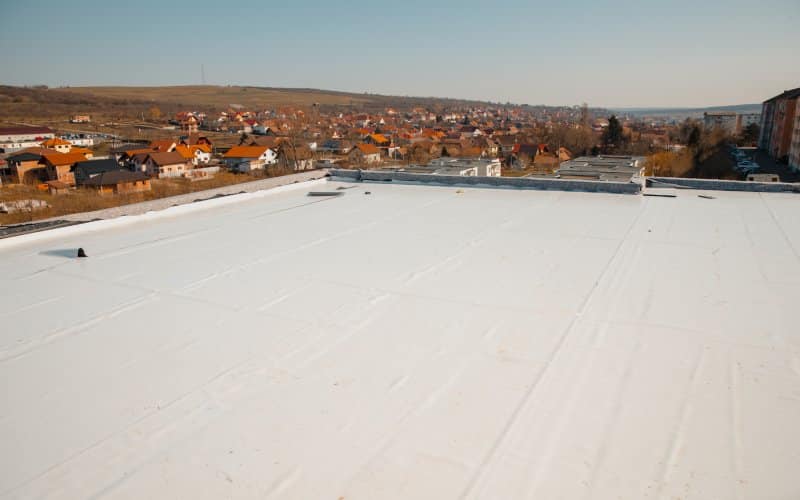
A commercial building owner needs to carefully consider specific needs, budget, maintenance requirements, and potential lifespan when selecting roofing systems. Another component is to ensure adequate inspections to assess and identify potential concerns.
Professional roofing inspections are crucial for ensuring maintenance is effective and extending the lifespan of commercial roofs. These assessments identify issues like leaks, damaged materials, and structural weaknesses. By addressing problems early, costly repairs and premature replacement can be avoided. Regular inspections enable timely maintenance and repairs, ensuring the roof's durability and longevity, while also enhancing energy efficiency and safety for the entire building.
ABSI offers roofing consulting services to help commercial business owners get the most out of their low-slope roofing systems, for better longevity.
The roof of a commercial building is its first line of defense against the elements, and its integrity is critical to protect the investments and assets within. Knowing when and how often to replace a commercial building roof is essential to maintain the structural integrity of the building and prevent costly damage and building downtime.
There are many factors which impact how long commercial roofs may last before needing replacement.
The type of roofing material used plays a significant role in determining how long a commercial building roof will last. Each material has its own lifespan and maintenance requirements. For example, EPDM roofing, composed of synthetic rubber, resists deterioration and offers a 20 to 25 year lifespan. PVC roofing, with a higher initial cost, boasts energy efficiency due to its reflective white surface and fire-retardant qualities, and generally lasts 25 to 30 years. TPO roofing, a newer and eco-friendlier choice than PVC, is cost-effective, but only offers a lifespan of 20 to 25 years. Besides single ply roofing, there is the traditional 4-ply built up roof and modified bitumen roofing systems, life cycle of these roofs depends on the initial system design, application and manufacturer warranty programs.
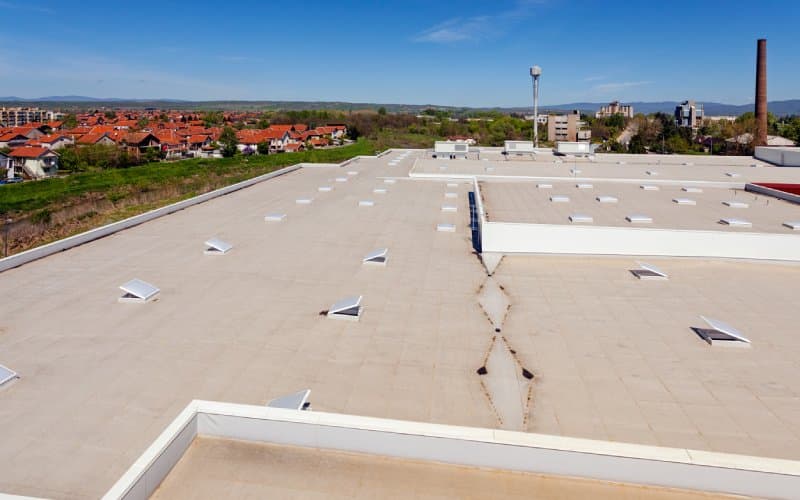
The local climate and weather conditions can have a substantial impact on a roof's lifespan. Intense sunlight, heavy rainfall, ice, extreme temperatures, and severe weather events such as hailstorms can cause immediate damage and speed up deterioration. Ontario's harsh winters and hot summers can mean a roof replacement may be needed sooner.
The design of the roof can affect its longevity. A well-constructed roof with proper drainage systems can help extend its lifespan by preventing water pooling, which can lead to leaks and structural damage. Many commercial buildings have flat roofing, which can make drainage difficult, so proper design and installation is essential to prevent pooling.
How well a new commercial roof was installed has a big impact on lifespan. A poorly installed roof may experience premature wear and tear, and require replacement sooner than expected. Hiring an experienced and reputable commercial roofing company for a proper installation is recommended.
Regular maintenance can greatly extend the lifespan of a commercial building roof. Neglecting routine inspections, cleaning, and repairs allow small issues to develop into major issues. A proactive maintenance plan and prioritizing early repairs helps to keep a commercial roof in good condition; professional roof inspections can help with identifying and prioritizing repairs.
There are several signs a roof needs to be replaced, and not simply repaired.
Water stains on the ceiling or walls, as well as persistent leaks, are clear signs that the roof's integrity has been compromised. Water damage can lead to more extensive issues within the building, making timely replacement essential.
If an inspection shows visible roofing material damage, including cracked, bubbling or blistered, curled, loose, or missing roofing materials, the roof has likely reached the end of its lifespan. These issues mean the roof system is no longer able to protect the building and keep out the elements sufficiently. A sagging or bowing roof is a structural concern that requires immediate attention. There may be underlying damage to the roof's supporting structure so a complete replacement is needed.
If you find yourself frequently having to repair the roof, it may be more cost-effective to replace it. Frequent repairs add up, and the overall condition of the roof will continue to deteriorate, making it more costly to keep and repair.
Finally, an aging or damaged roof can lead to poor thermal insulation and increased energy costs. If your utility bills have increased with no other explanation, a commercial roof replacement and enhanced insulation may help.
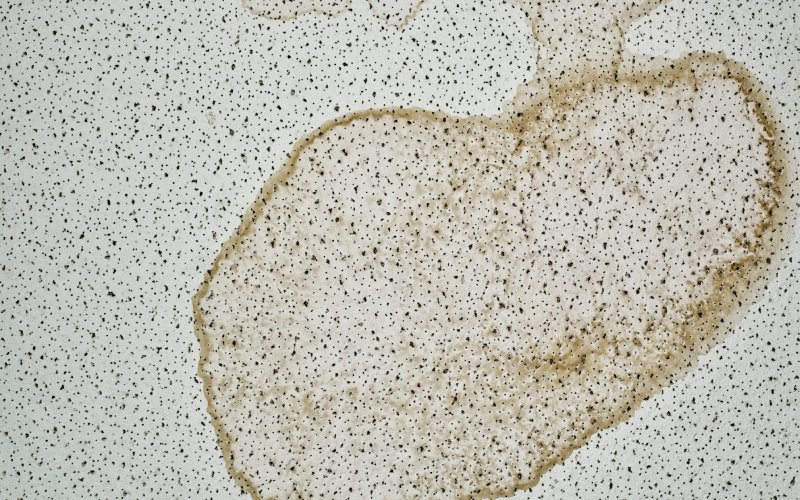
Knowing when and how often to replace a commercial building roof is critical. By staying proactive and well informed, you can make better decisions regarding the replacement of your commercial building's roof.
Set a schedule of regular inspections to monitor your commercial roof's condition. Professional inspections can identify issues early, allowing for timely repairs or replacement planning.
Replacing a commercial building roof is a major expense. Create a long-term budget that accounts for future replacement costs, based on the anticipated lifespan of your roof.
Consult with a commercial roof consulting firm to assess the current condition of the roof and get a professional opinion on its remaining lifespan. They can provide valuable insights into the best roofing materials and systems for your building to help it last longer, and help with budgeting for the replacement.
Be sure to consider the long-term needs of your commercial property. If you plan to occupy the building for many years, investing in a durable, long-lasting roof is recommended. Also, when planning ahead, stay on top of all relevant local codes and legislative requirements, so you are prepared for any changes.
A commercial roof typically lasts an average of about 20 years. However, with high-quality materials and proper installation, it can last for up to 30 years, while lower-quality roofs may require replacement in as little as ten years. If your commercial roof approaches the 20-year mark, it's wise to start considering replacement to prevent further deterioration and costlier repairs.
Also, whenever you encounter any roof damage or problems, assess the extent of the issue. Determine if a simple roof repair fully addresses the issue, or whether a full roof replacement is needed to avoid future concerns? If there are only minor damages, be sure to complete any roof repair as soon as possible, to avoid the roof condition from worsening and needing a replacement after all.
However, if your roof has sustained significant damage, it is better to proceed with a complete roof replacement without delay, or the rest of your building is likely to be damaged.
Accent Building Sciences Inc. offers commercial roof inspection services in Ontario. We specialize in professional roof design, inspection, and specification services for facility owners, commercial clients, and municipalities. We assess roof system performance, vulnerabilities, and repair needs, with accurate, high-quality inspections. We also guide our clients on service life and replacement schedules, so they can make informed decisions, and avoid costly repairs, replacements, and other risks. An inadequate roof assessment may lead to higher costs and safety risks.
Regular commercial roof inspections ensure your complete roofing systems are working properly, and identify if materials or sections are damaged or worn, to ensure building safety as well as ensure you have a well-maintained roof that will last as long as possible. Expert recommendations on required maintenance or repairs are critical to help you fulfill your obligations as a commercial building owner, but there are other reasons why regular commercial roof inspections play a significant role in building care.
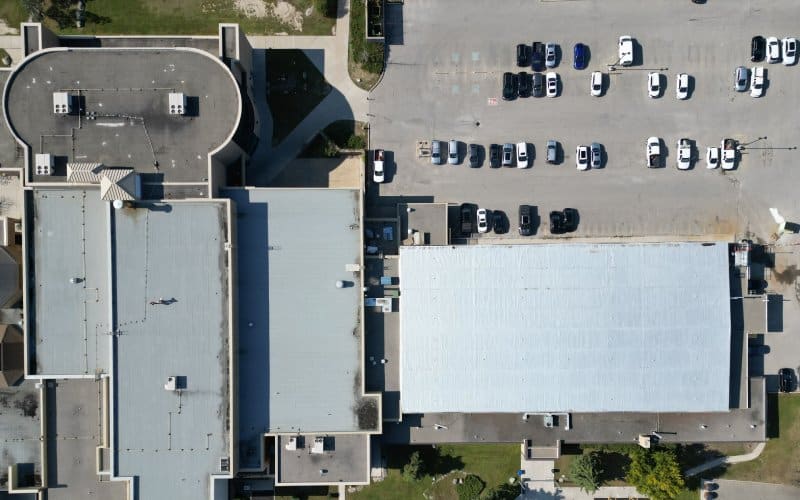
To fully gain the benefit of an expert eye looking at your commercial roof, it's recommended to have regular roof inspections by a professional regularly. While an event-specific roof inspection is important if damages are likely, such as after a storm, or when buying a commercial building, these should not be seen as one-time-only occurrences.
Regular roof inspections means that any potential issues are identified early, as your commercial roof conditions change. Damage from harsh seasonal weather or other forces on your roof are noted before they can lead to more significant damage that requires costly repairs.
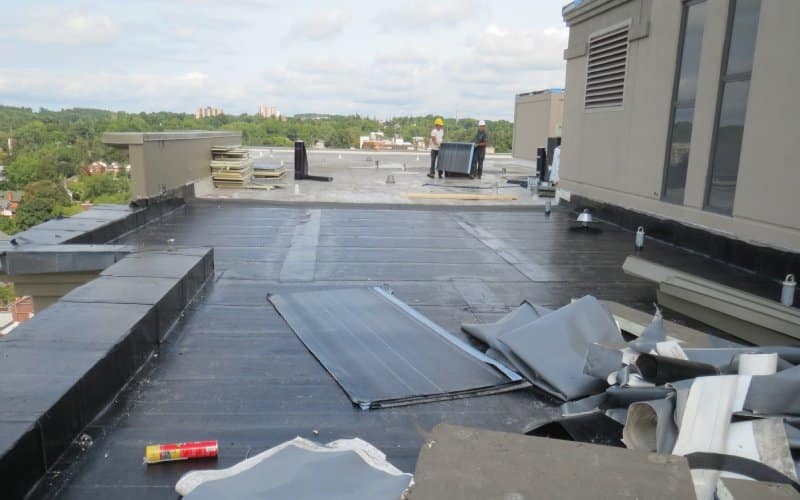
Building drawings and maintenance records will be reviewed first for background, before an on-site inspection to determine the existing condition of the roof at that time.
With a professional roof inspection, testing will be done and examinations beyond simply visually scanning the roof, although professionals are trained to complete visual inspections that are more effective than what a building owner or other untrained person can offer.
In a professional commercial roof inspection, all components in the overall roofing system will be assessed for damage, wear, or other issues, including a component not working as it should. Underlayment, waterproofing membranes, flashing, electrical and mechanical systems, and other roofing materials and components will all be checked.
A thorough examination will be done of interiors for moisture damage or leakage. The roofing system will be examined for damage or concerns beyond what is easily visible, to make sure covered roofing system layers are working properly and not compromised.
Component testing, sampling, and imaging with special tools may be needed. Roof uplift resistance testing and other specialty testing may be completed as necessary for the type of commercial roof you have, as well as the conditions it is likely to face.
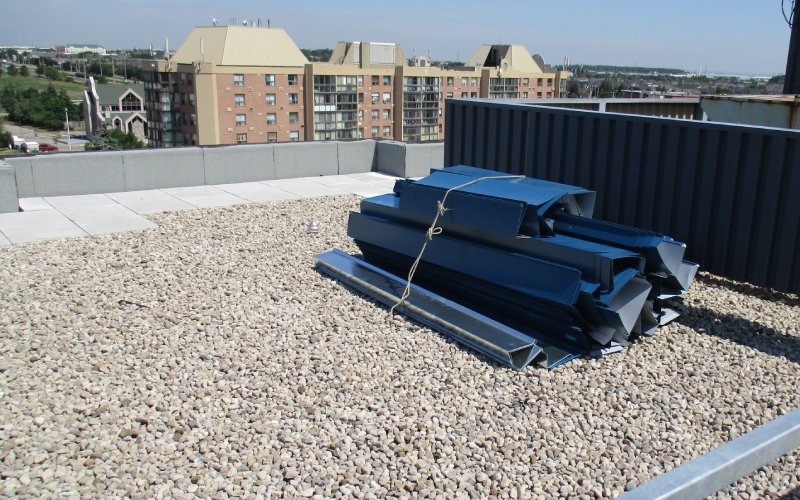
A key benefit of having a professional roof inspection is having a comprehensive report to plan maintenance and budgets from.
After your commercial roof inspection, a report is prepared that will identify potential problems, as well as existing ones. Issues will be categorized or rated for prioritization, so significant problems are clearly highlighted for immediate attention. Potential problems may be given timelines for addressing, to make it easier for budgeting.
A professional can complete a comprehensive analysis, having the expertise and the special tools required. It is not enough to go on your roof yourself to look for visible damage or leaks. With a professional roof inspector, not only are you getting the benefit of someone with training and expertise in inspecting and testing your roof, but you are getting someone with the knowledge to interpret the findings and develop actionable recommendations.
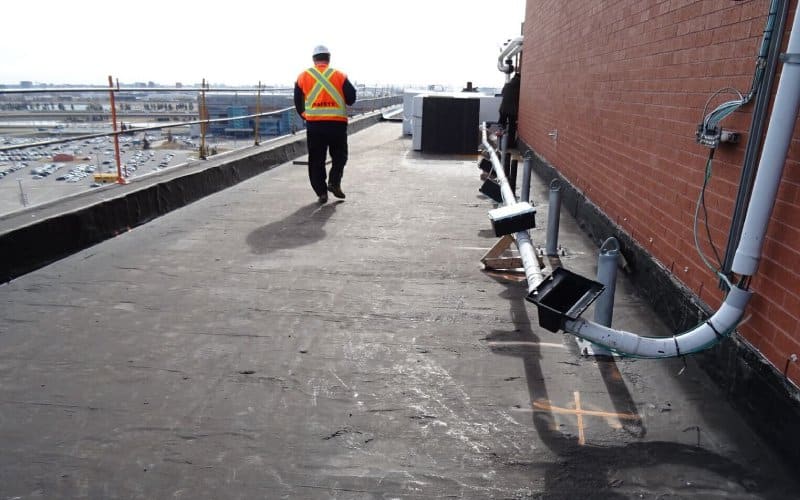
Building codes and safety legislation must be followed, and inspections can ensure these requirements are met. Third party, professional roof inspections also help with insurance and liability matters, as well as allowing you to relax and feel confident about your roof.
A roof inspection will identify where a roof is failing and not acting as the protective layer that it should be. Damage and wear affects insulation, allowing heat loss and other roofing performance issues. A poorly-functioning roof means HVAC systems need to work harder, wasting energy and increasing bills.
A roof that is kept in excellent condition lasts longer and needs fewer repairs than one that does not receive timely, regular maintenance.
Comprehensive, regular inspections on roofing systems allow potential problems to be identified, so minor repairs and maintenance don't become major repairs, and can also prevent costly secondary damage to other property.
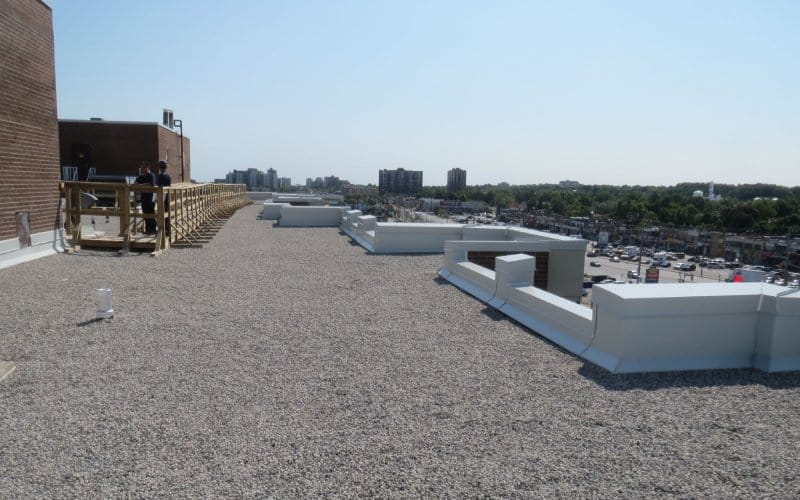
At ABSI, we provide a comprehensive inspection and report on your commercial roofing system, so you can make more informed decisions when planning maintenance and repairs. We have years of experience helping owners of commercial buildings, expertly prioritizing work needed to support them better.
In recent years, there have been many innovations in the construction industry, as building owners are pushing for efficient, sustainable, and long-lasting commercial roofing system solutions. This includes advancements in the roofing industry. These technological advancements in techniques and materials means the roofs of commercial buildings can be expected to have a longer lifespan, perform better, and offer a host of other benefits.
Roofing contractors and building owners alike should stay current on advancements in commercial roofing systems and materials.
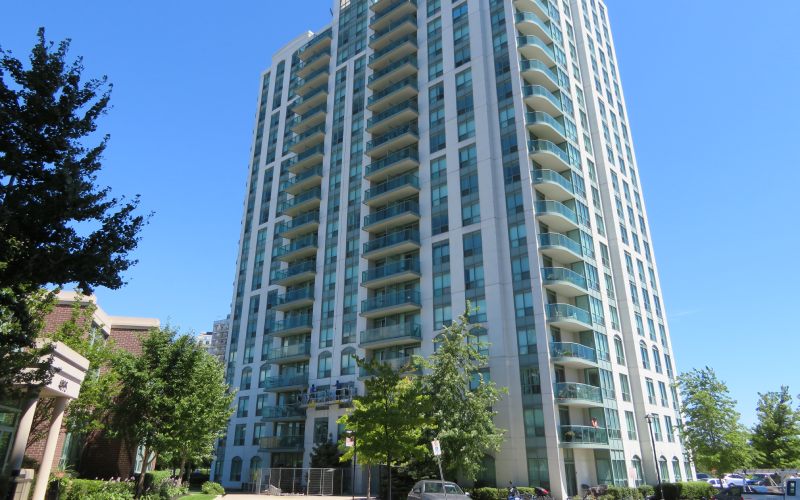
New roofing technologies are becoming more popular since building owners are expecting better options to lower energy consumption and improve their roofs' performance and durability. There is also a push for options to reduce a building's environmental impact. This means new technologies are more available and refined for better performance.
These new advancements can improve your building's energy efficiency, lowering energy consumption and cooling costs by reflecting heat and sun away, or through other techniques. You can feel better about your choices, with newer more sustainable technologies available, and keep clients and users of your building happier with eco-friendly options. New, innovative roofing technologies are composed of sustainable materials and are more environmentally friendly because of their increased efficiency.
Improved building materials and techniques are more durable and last longer. They have a high resistance to wear and tear, whether from debris, weather, people or equipment on the roof, and other forces. This means a longer lifespan and reduced maintenance needs to save owners money. This also makes them better at coping with extreme weather, such as high temperatures, winds, rain, and hail, for better safety and less damage to worry about.
New commercial roofing systems and materials are also more aesthetic, and able to be customized to fit the desired look of your building, improving the overall appearance.
Newer, improved roofing increases your property value, too. Because you are using roofing systems that are more efficient, attractive, and durable, buyers or renters will be more attracted to your building.
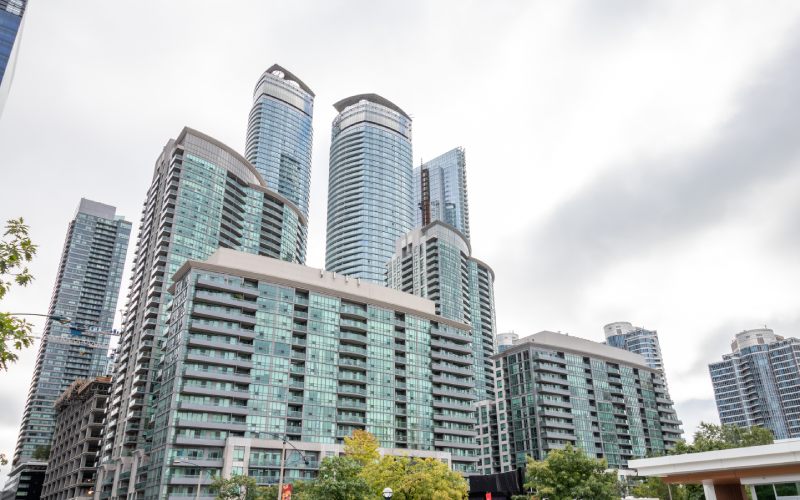
If you are looking at installing a new roof, or replacing or repairing an existing one, ask your licensed roofing contractor about newer options that are available.
Many commercial roofs are low slope metal roofs using corrugated galvanized steel. Copper, aluminum, stainless steel and tin are also common in commercial metal roofing. Metal roofing is durable, strong, and long lasting. However, a metal roofing solution tends to be more expensive than other types of flat roofs.
New techniques in standing seam roofing have improved the ease of installation, however, to help with roofing costs, such as vertical interlocking panels along the roof. Machine seaming on low slope metal roofing helps create watertight seal; seaming equipment is available that just needs to be rolled along the panels to seal the seams together.
This helps with drainage issues to reduce water-related damages, and a longer lifespan, for a more cost-effective commercial flat roofing.
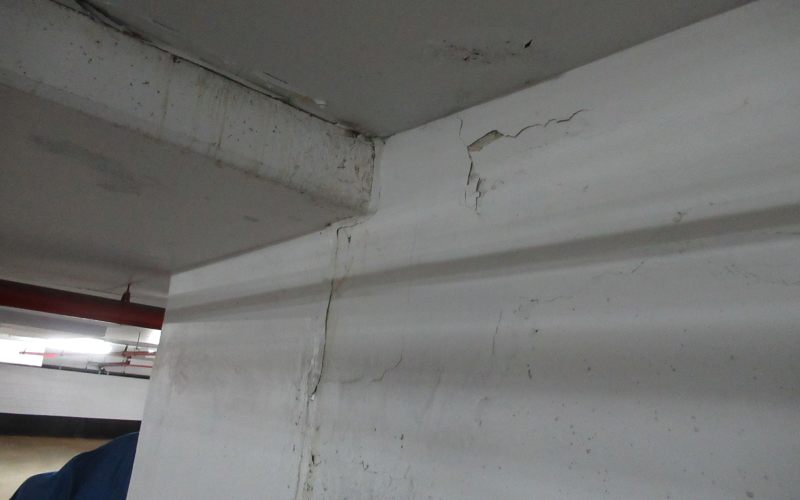
Prefabricated roof modules can be used for a flat roof for faster installation and lowered costs and waste. 3D printing of module elements is even starting to be used, allowing for more customization.
A cool roof is an environmentally friendly choice that is becoming more popular. They lower energy costs, reflecting sunlight and absorbing less heat, thus making buildings more comfortable. This can be achieved in a few different ways. New materials, including highly-reflective coatings and phase change materials, have been key in helping to achieve the excellent results that are now possible. New cool roofs are able to regulate temperature, even in temperature extremes, to improve energy efficiency.
This may seem more like a throwback than a technological advancement, but commercial buildings are starting to appreciate what these have to offer again, and new technologies make them more widely achievable and successful, including sturdy roofing membrane materials to maintain the roof's water tightness and integrity.
Also called vegetative roofing systems, these are an excellent eco-friendly option. A green roof involves soil and vegetation added on as a layer to a flat roof. An effective drainage system to support it also needs to be added. Greenery reduces the heat absorbed, and is a good insulator. Rainwater can be collected for reuse to add to sustainability. These roofs also absorb pollutants and carbon dioxide, further benefitting the environment. Energy costs can be significantly reduced.
Green roofing systems also offer stormwater control.
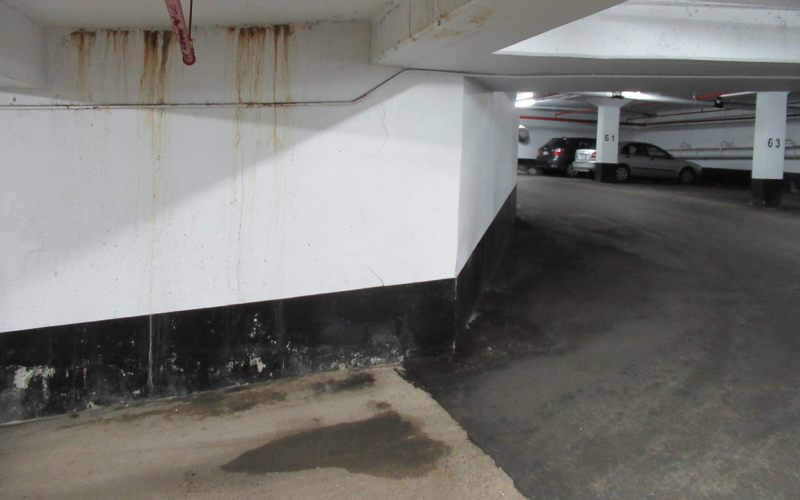
Solar roofs have become more possible recently. Traditionally, solar panels were overly delicate, but advancements have made them more usable, either as standalone panels or complete solar roofs. This makes them a feasible option for owners looking to improve their sustainability and reduce energy consumption.
A new trend is integrating technology into roofing systems. Sensors and other devices collect data to allow roofing systems to be optimized for cost-effectiveness and efficiency.
Ongoing improvements to roofing materials, including refinements to 'recipes' for modified bitumen and EPDM roofs or liquid-applied membranes, have greatly improved roofing system performance.
Roof insulation with new polymetric blends and glass fibre increase energy efficiency and achieve higher R-values. Flat roof membrane improvements using polyvinyl chloride and thermoplastic polyolefin enhance weatherproofing and water tightness. Improvements in fireproof roofing offer better fire resistance and safety. New synthetic roofing is offering more choices for lighter, stronger, and cheaper roofs that work well with green roofs and other eco-friendly roofing system technologies, as well as offering more aesthetic options.
At ABSI, we offer roofing system inspections and other building envelope engineering services, to support you, whatever roofing system you choose, and whatever commercial building type you have.
Many commercial building owners are unaware of how important good care of their commercial roofing system and flat roof is. It's easy to ignore a roof, since you don't really look at it daily, and it's hard to see the wear and tear.
However, not having regular inspections and not conducting routine maintenance to find and fix minor roof issues early on, before they deteriorate into significant damage, means more costly repairs, risks to structural integrity, and even a premature total roof replacement. Most commercial roofs are designed to last anywhere from 15 to 30 years, but this doesn't mean they don't need maintenance, and they won't last their full term without care.
A commercial roof is expensive, so it makes sense to inspect and maintain it, so you get the most possible use out of it. Below are some roof maintenance tips, to help you make sure you are caring for your flat roof effectively.
Firstly, be sure you are maintaining your entire roof. Commercial roof maintenance needs to include all elements of roofing systems, including membranes and parts of the system that can't be visually inspected. This means going beyond noting visible signs of damage and repairing them, to looking for indirect symptoms of roof issues, such as water damage. A roofing professional who specializes in commercial roof inspection can help identify areas that need repair and make recommendations.
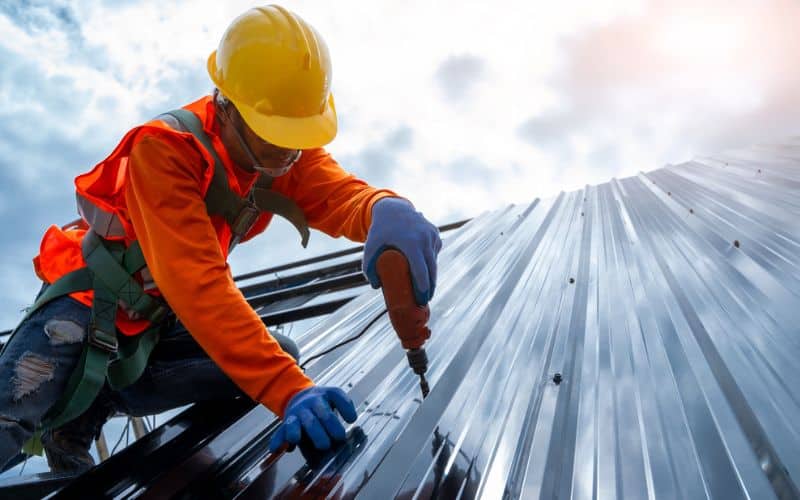
If you are not inspecting your roof for hidden and visible damage, minor issues will go unnoticed, and these little problems will be allowed to deteriorate into major issues. Manufacturers and professional roofing contractor organizations recommend biannual or at least annual roof system inspections, making sure to complete any noted repairs needed, to extend your commercial roof's longevity significantly. Inspecting after the extremes of winter weather and summer heat is best.
Checking for holes, tears, cracks and blisters, as well as other damages or warning signs of issues, like roofing material pulling away, helps identify early damage for timely repairs. Don't forget to check roof flashing, which covers any openings to prevent water leaks, which can deteriorate, pull away, or get punctured.
A professional inspection helps ensure all potential issues are identified early and prioritized for repair.
After severe storms, be sure to check for loose flashing, standing water afterwards, and other signs.
Even if you don't notice anything damaged on your roof, watch for other signs there may be roofing problems, like water or moisture damage on interior walls, including mold and mildew. Don't forget to check ceilings and attics.
Check all flashing, and look at vents, fascias, chimneys, drip edges and other structures. Look for damage and signs of dampness. Repairs are needed if there is any:
Check for debris weighing on a roof or blocking the roof’s drainage system, and clear any away as soon as possible. This helps clean the area so that damage can more easily be spotted, as well as acting as preventive maintenance against the issues that wet, rotting, or heavy debris can cause.
Good maintenance logs help you keep track of what you have done in the past, but also allows you to predict potential future repairs. It is useful as evidence of work completed, too, if you are selling your commercial building or for liability concerns. Be sure to include what was inspected, what was received, and what exactly was repaired and how.
Take pictures to document leak locations, tears and cracks, and other issues, as well as the condition after repairs. This is a good visual record to track deterioration and effectiveness of repairs.
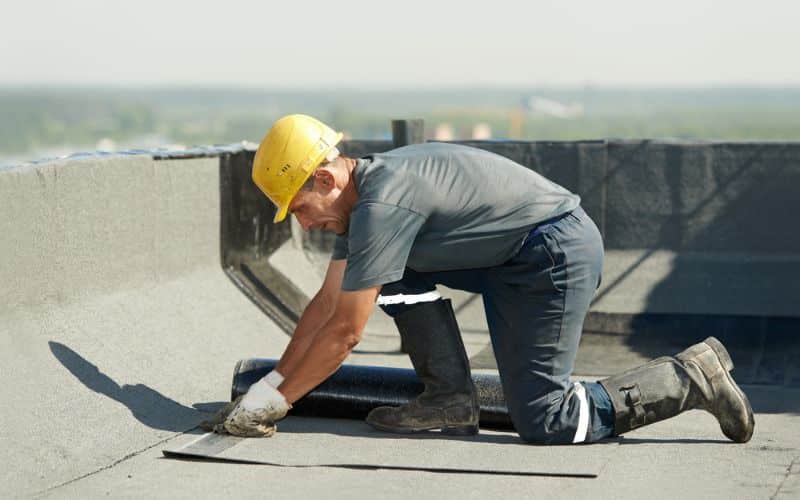
Whether you notice issues during an inspection or throughout the year, if damage to your roofing materials, including your roof membrane or any other roofing systems elements, occurs, don't delay necessary repairs; they are more cost effective to repair earlier, and help prevent premature deterioration of your commercial roof.
The extremes of summer and winter weather creates stresses on your roof, so seasonal commercial roof maintenance is essential to prepare it for the challenges of the next season. It makes a natural routine for your regular roof inspection to check for damage commonly caused by the conditions of the previous season.
In spring, remove debris from roofs and gutters, trim back trees. Learn about more spring maintenance tips to prepare for summer here. In fall, look for UV damage and replace or repair compromised materials, and reduce any load on the roof to prepare for winter snow.
Commercial property owners should be familiar with the roof material used, and make sure it is suitable for the climate and building needs. You should also make sure you are aware of the specific maintenance recommended for your type of material. Each roofing material type requires different maintenance, so you should develop an appropriate maintenance plan for your commercial building to prevent roofing issues.
Find out more about roof material choices, and consult with a roofing expert on the best roofing material for your commercial buildings.
Be sure to not store anything on the roof or allow people on it unless necessary to keep loads light. Flat commercial roofs tend to collect dirt and debris that needs to be regularly cleared, to prevent built up loads, trapped moisture and mold growth.
As part of ongoing roof maintenance, ensure gutters and drainage systems are cleared regularly, to avoid water damage and mold.
Tree branches can scratch and fall onto commercial roofs, especially during high winds from a storm. Trimming trees and bushes helps prevent this, as well as reducing the buildup of leaves and debris.
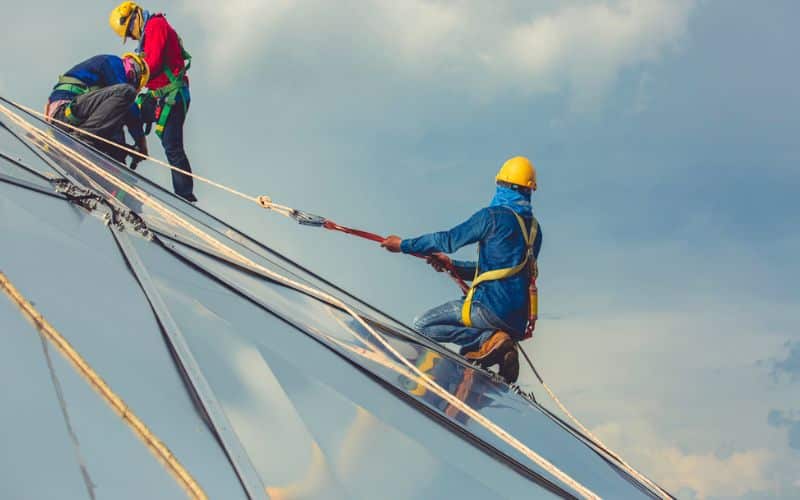
Keeping to a regular inspection, maintenance and repair program can lead to significant cost savings, and reduce the risks of significant roof damage that can lead to building closures and other inconveniences. It lengthens the roof life expectancy. Regular maintenance is critical to comply with manufacturer's requirements for warranties, and prevents expensive damages that aren't covered.
ABSI can help you with thorough inspections and assessments, making recommendations for repairs, and other services, so you get the maximum life out of your roof.
For any concerns about commercial roofing maintenance. Our expert team is based at 2800 14th Ave, Unit 13, Markham, ON L3R 0E4, proudly serving the Toronto area. To connect with us in Toronto, dial 416-939-0129. If you're in the Durham Region, reach out at 416-871-7453. Count on us for comprehensive building science solutions tailored to your needs.
1. How often should I inspect my commercial roof?
Ideally, commercial roofs should be inspected at least biannually. Inspections after the extreme weather of winter and summer are recommended.
2. Why is early detection of roof damage important?
Early detection allows for timely repairs, preventing minor issues from escalating into major problems, extending the roof's lifespan, and minimizing repair costs.
3. What should I check for during a roof inspection?
Check for holes, tears, cracks, blisters, water pooling, sagging, rotting, corrosion, and any signs of dampness. Inspect all roof structures, flashing, vents, chimneys, and other components.
4. Why is documentation important in roof maintenance?
Documentation helps track past maintenance, predicts potential repairs, provides evidence of work for liability concerns, and aids in monitoring deterioration and the effectiveness of repairs.
5. How does seasonal maintenance benefit commercial roofs?
Seasonal maintenance prepares the roof for upcoming challenges by addressing issues caused by the previous season's weather conditions, helping to prevent future problems.
6. Can I store items on my commercial roof?
It's advisable to avoid storing items on the roof unless necessary. Extra loads can contribute to structural stress and damage over time.
7. What is the significance of gutter maintenance?
Clearing gutters regularly prevents water damage and mold growth, as clogged gutters can lead to water accumulation on the roof.
8. Why is knowing my roof material important?
Understanding your roof material's characteristics and maintenance requirements helps tailor your maintenance plan to prevent specific roofing issues.
9. Can tree branches damage my commercial roof?
Yes, tree branches can scratch and fall onto commercial roofs during storms. Pruning trees and bushes reduces the risk of damage and debris buildup.
10. How can professionals help with roof maintenance?
Roofing professionals provide thorough inspections, recommend repairs, and ensure compliance with warranty requirements. Regular professional maintenance prevents costly damages and extends the roof's lifespan.

500 Hood Road, Suite 320Markham ONL3R 9Z3